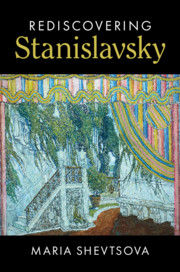Chapter 4 - Studio
Published online by Cambridge University Press: 12 November 2019
Summary
A chart of the six studios, linked to the MAT or under Stanislavsky’s direct responsibility, identifies the time, duration and character of each and paves the way for detailed discussion of their respective activities, some receiving less space than others for reasons that are explained. The First Studio led by Sulerzhitsky is the most famous of them, yet is little known ¬–¬ the case also of Sulerzhitsky whose working biography is drawn as much as evidence permits. The foundation, as demonstrated, for the remaining future five studios, the First is detailed largely through the notes, memoirs and letters of its participants, several of whom became successful theatre women, notably Birman and Giatsintova. The Second Studio, the home of Knebel, is shown to have been pivotal in the development of generations of significant figures and is thus much more important than usually allowed.
The Third, Vakhtangov’s Studio, is a familiar entity, while the Fourth reveals its explicit social mission in a revolutionary era. The Bolshoy Opera Studio with its several avatars and the Opera-Dramatic Studio are vital sites of Stanislavsky’s ongoing research without which his System, let alone his directorial and pedagogical work, cannot be accurately gauged.
Information
- Type
- Chapter
- Information
- Rediscovering Stanislavsky , pp. 129 - 179Publisher: Cambridge University PressPrint publication year: 2019
